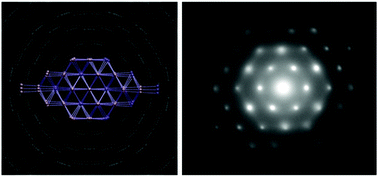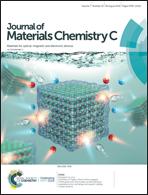Identification of turbostratic twisting in germanane†
Abstract
Germanane, a van der Waals layered material predicted to have a direct band gap and high carrier mobility, is a promising two-dimensional material with applications in optoelectronics. The electronic properties of germanane have been well studied; however, experimentally measured properties are orders of magnitude lower than predicted values, potentially limiting future device applications. The structure of germanane contains an inherent disorder along the c-axis, resulting in a diffuse halo with hexagonal symmetry in the electron diffraction pattern. The origin of this disorder is not well understood, further limiting the device application of germanane. Here, we have used experimental and simulated electron diffraction patterns to show that this diffuse scattering arises from turbostratic disorder present in the germanane structure with rotational disorder as the main contribution. The maximum rotation angle in the examined germanane crystal is limited to three degrees. For larger angles, germanane would become unstable as DFT calculations show. DFT calculations also indicate that small angle rotations cause a change in charge distribution in Ge and H atoms, and thus should affect the electronic properties of germanane considerably. This study explains for the first time the origin of the c-axis disorder in this van der Waals structure and establishes computationally analyzed diffraction patterns as a tool to quantify turbostratic disorder.



 Please wait while we load your content...
Please wait while we load your content...